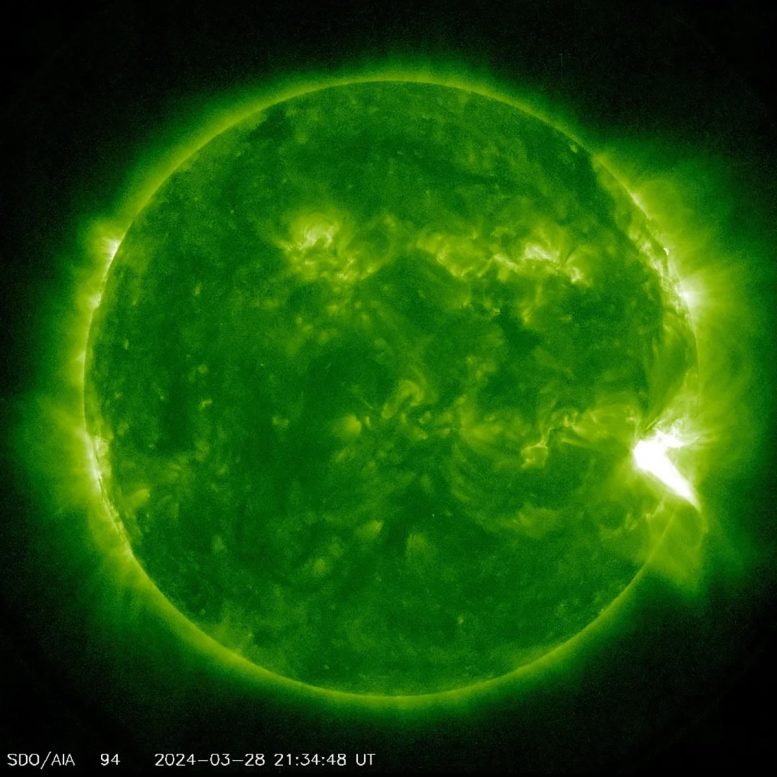
NASA’s Solar Dynamics Observatory captured this image of a solar flare – as seen in the bright flash on the right – on March 28, 2024. The image shows a subset of extreme ultraviolet light that highlights the extremely hot material in flares and which is colorized in green. Credit: NASA/SDO
The Sun emitted a strong solar flare, peaking at 4:56 p.m. ET on March 28, 2024. NASA’s Solar Dynamics Observatory, which watches the Sun constantly, captured an image of the event.
Solar flares are powerful bursts of energy. Flares and solar eruptions can impact radio communications, electric power grids, navigation signals, and pose risks to spacecraft and astronauts.
This flare is classified as an X1.1 flare. X-class denotes the most intense flares, while the number provides more information about its strength.

This animation of the Solar Dynamics Observatory shows it above the Earth as it faces toward the Sun. SDO is designed to help us understand the Sun’s influence on Earth and Near-Earth space by studying the solar atmosphere on small scales of space and time and in many wavelengths simultaneously. Credit: NASA/Goddard Space Flight Center Conceptual Image Lab
Solar Flares
Solar flares are intense bursts of radiation emanating from the release of magnetic energy in the Sun’s atmosphere. They are one of the most powerful phenomena in our solar system, capable of releasing vast amounts of energy equivalent to millions of 100-megaton hydrogen bombs exploding at once.
The energy from a solar flare can affect the Earth in several ways. It can disrupt satellite operations, communication systems, and even power grids on the ground. Solar flares are also responsible for the beautiful auroras, known as the Northern and Southern Lights, that appear in the Earth’s polar regions.
Solar flares are classified based on their brightness in the X-ray wavelengths. There are five main categories: A, B, C, M, and X, with A being the weakest and X the strongest. Each category has a tenfold increase in energy output. Within each category, flares are further classified from 1 to 9, but this scale is open-ended for particularly strong flares. For example, an X1 flare is ten times as powerful as an M1 flare, while an X2 flare is twice as intense as an X1 flare.
X-class flares can cause planet-wide radio blackouts and long-lasting radiation storms, affecting the Earth’s ionosphere and radio communications. M-class flares can cause brief radio blackouts in the Earth’s polar regions and minor radiation storms. C-class and lower flares are generally too weak to significantly affect Earth.









Be the first to comment on "Solar Power Surge: Sun Emits Intense X1.1 Flare"